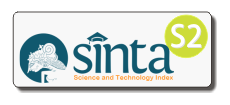The Determinant of Indonesia Enterpreneur’s Intention to Pay Zakat: Does Government Support Matter?
DOI:
https://doi.org/10.14421/grieb.2022.101-08Keywords:
Entrepreneurs, Government Support, Paying Zakat, Zakat InstitutionAbstract
This study aims to analyze the entrepreneur’s behavior to pay zakat and to formulate the role of zakat institutions such as the National Zakat Board (BAZNAS) and Amil Zakat Institution (LAZ) in improving total zakat collection. Total respondents in this research are 751 entrepreneurs across 28 provinces in Indonesia. Partial least squares structural equation modeling (PLS-SEM) was used to know the entrepreneur’s behavior in paying zakat. Attitude toward moral reasoning, influence of religious leaders, peer influence, zakat knowledge, zakat system structure, enforcement of zakat law, and government support affect the interest of entrepreneurs to pay zakat. However, the attitude toward zakat evasion and transparency of zakat management does not affect the interest of entrepreneurs to pay zakat. The role of the government is getting a spotlight in this study because of its significance in formulating relevant policies to increase the interest of entrepreneurs to pay zakat. The establishment and supervision of zakat institutions as well as the issuance of supportive regulation is considered important in this study.
Downloads
 Abstract viewed: 418 times
|
Abstract viewed: 418 times
|
 PDF downloaded = 426 times
PDF downloaded = 426 times
References
Abdelbaki, H. H. (2013). The impact of zakat on poverty and income inequality in Bahrain. Review of Integrative Business and Economics Research, 2(1), 133–154.
Abror, A., & Hudayati, A. (2020). The effect of distributive justice on intention to pay zakat through zakat institutions using affective and cognitive trust as intervening variables. Jurnal Ekonomi & Keuangan Islam, 6(1), 24–33. https://doi.org/10.20885/jeki.vol6.iss1.art3
Ahmad, S., Wahid, H., & Mohamad, A. (2006). Penswastaan institusi zakat dan kesannya terhadap pembayaran secara formal di Malaysia. International Journal of Management Studies, 13(2), 175–196.
Ajzen, I. (1985), Intentions to Actions-TPB. Springer.
Ajzen, I. (1991). The theory of planned behavior. Organizational Behavior and Human Decision Process, 50, 179–211. https://doi.org/10.1080/10410236.2018.1493416
Al-Ajam, A. S., & Nor, K. M. (2015). Challenges of adoption of internet banking service in Yemen. International Journal of Bank Marketing, 33(2), 178–194. https://doi.org/10.1108/IJBM-01-2013-0001
Ali, I., & Hatta, Z. A. (2014). Zakat as a poverty reduction mechanism among the muslim community: Case study of Bangladesh, Malaysia, and Indonesia. Asian Social Work and Policy Review, 8(1), 59–70. https://doi.org/10.1111/aswp.12025
Antonio, M. S., Laela, S. F., Mukhlas, D., & Ghifari, A. (2020). Optimizing zakat collection in the digital era: Muzakki’s perception. Jurnal Dinamika Akuntansi Dan Bisnis, 7(2), 235–254. https://doi.org/10.24815/jdab.v7i2.16597
Aziz, M. R. A., & Anim, N. A. H. M. (2020). Trust towards zakat institutions among muslims business owners. Jurnal Ekonomi & Keuangan Islam, 6(1), 1–9. https://doi.org/10.20885/jeki.vol6.iss1.art1
Badan Amil Zakat Nasional. (2019). Statistik Zakat Nasional 2019 (National Zakat Statistics 2019). Baznas, 1–109.
Bakar, M. A., & Ghani, A. A. (2011). Towards achieving the quality of life in the management of zakat distribution to the rightful recipients (the poor and needy). International Journal of Business and Social Science, 2(4), 237–246.
Bobek, D. D., Hageman, A. M., & Kelliher, C. F. (2013). Analyzing the role of social norms in tax compliance behavior. Journal of Business Ethics, 115(3), 451–468. https://doi.org/10.1007/s10551-012-1390-7
Byrne, B. M. (2010), Structural equation modeling with AMOS: Basic concepts, applications, and programming (2nd ed.). Routledge/Taylor & Francis Group.
Chin, W. W. (1998). The partial least squares approach for structural equation modeling. Modern Methods for Business Research, January 1998, 295–336.
Drolet, A. L., & Morrison, D. G. (2001). Do we really need multiple-item measures in service research? Journal of Service Research, 3(3), 196–204. https://doi.org/10.1177/109467050133001
Elliott, A. C., & Woodward, W. A. (2007). Statistical analysis quick reference guidebook: With SPSS examples. Sage.
Farouk, A. U., Idris, K. B. M., & Saad, R. A. B. (2018). Moderating role of religiosity on zakat compliance behavior in Nigeria. International Journal of Islamic and Middle Eastern Finance and Management, 11(3), 357–373. https://doi.org/10.1108/IMEFM-05-2017-0122
Farouk, A. U., Idris, K. B. M., & Saad, R. A. B. (2017). Predicting the intention of civil servants to pay zakat. International Journal of Innovative Knowledge Concepts, 5(7), 21–29.
Fishbein, M. . (1967), Attitude and the prediction of behavior in M. Fishbein (Ed.), Readings in Attitude Theory and Measurement. John Wiley & Sons.
Fishbein, M., & Ajzen, I. (1975), Belief, attitude, intention, and behavior: An introduction to theory and research. Addison-Wesley Pub.
Fornell, C., & Larcker, D. F. (1981). Evaluating structural equation models with unobservale variables and measurement error. Journal of Marketing Research, 18(1), 39–50.
Ghazali, M. Z., Saad, R. A. J., & Wahab, M. S. A. (2016). A conceptual framework for examining trust towards zakat institution. International Journal of Economics and Financial Issues, 6(Special Issue), 98–102.
Hair, J., Hollingsworth, C. L., Randolph, A. B., & Chong, A. Y. L. (2017). An updated and expanded assessment of PLS-SEM in information systems research. Industrial Management and Data Systems, 117(3), 442–458. https://doi.org/10.1108/IMDS-04-2016-0130
Hair, J. F., Sarstedt, M., Hopkins, L., & Kuppelwieser, V. G. (2014). Partial least squares structural equation modeling (PLS-SEM): An emerging tool in business research. European Business Review, 26(2), 106–121. https://doi.org/10.1108/EBR-10-2013-0128
Hair, J. F., Sarstedt, M., Ringle, C. M., & Mena, J. A. (2012). An assessment of the use of partial least squares structural equation modeling in marketing research. Journal of the Academy of Marketing Science, 40(3), 414–433. https://doi.org/10.1007/s11747-011-0261-6
Hair, J. F., Black, W. C., & Babin, B. J. (2010). Multivariate data analysis. Pearson Prentice Hall.
Heikal, M., Khaddafi, M., & Falahuddin. (2014). The intention to pay zakat commercial: An application of revised theory of planned behavior. Journal of Economics and Behavioral Studies, 6(9), 727–734. https://doi.org/10.22610/jebs.v6i9.532
Henseler, J., Ringle, C. M., & Sarstedt, M. (2015). A new criterion for assessing discriminant validity in variance-based structural equation modeling. Journal of the Academy of Marketing Science, 43(1), 115–135. https://doi.org/10.1007/s11747-014-0403-8
Hossain, M. Z. (2012). Zakat in Islam: A powerful poverty alleviating instrument for Islamic countries. International Journal of Economic Development Research and Investment, 3(1), 1–11.
Huda, N., Rini, N., Mardoni, Y., & Putra, P. (2012). The analysis of attitudes, subjective norms, and behavioral control on muzakki’ s intention to pay zakah. International Journal of Business and Social Science, 3(22), 271–279.
Idris, K. M., Bidin, Z., & Saad, R. A. J. (2012). Islamic religiosity measurement and its relationship with business income zakat compliance behavior. Jurnal Pengurusan, 34, 3–10. https://doi.org/10.17576/pengurusan-2012-34-01
Iqbal, Z., & Mirakhor, A. (2012). Financial inclusion : Islamic finance perspective. Journal of Islamic Business and Management, 2(1), 35–64. https://doi.org/10.12816/0004974
Johari, F., Muhammad, M. R., & Ali, A. F. M. (2014). A review on literatures of zakat between 2003-2013. Library Philosophy and Practice, 2014(1).
Kahf, M., & Yafai, S. A. (2015). Social security and zakāh in theory and practice. IIUM Journal of Economics and Management, 23(2), 189–215.
Khair, U., Fahmi, H., Hakim, S. A., & Rahim, R. (2017). Forecasting error calculation with mean absolute deviation and mean absolute percentage error. Journal of Physics: Conference Series, 930(1). https://doi.org/10.1088/1742-6596/930/1/012002
Khalifa, M., & Shen, K. N. (2008). Drivers for transactional B2C M-commerce adoption: Extended theory of planned behavior. Journal of Computer Information Systems, 48(3), 111–117. https://doi.org/10.1080/08874417.2008.11646027
Khamis, M. R. B., Ariffin, M. S., & Samad, N. A. (2011). Compliance behavior of business zakat payment in Malaysia: A theoretical economic exposition. 8th International Conference on Islamic Economics and Finance, 1–17.
Khamis, M. R., & Yahya, N. C. (2015). Does law enforcement influence compliance behaviour of business zakat among SMEs?: An evidence via RASCH measurement model. Global Journal Al-Thaqafah, 5(1), 19–32. https://doi.org/10.7187/GJAT752015.05.01
Koutromanos, G., Styliaras, G., & Christodoulou, S. (2015). Student and in-service teachers’ acceptance of spatial hypermedia in their teaching: The case of HyperSea. Education and Information Technologies, 20(3), 559–578. https://doi.org/10.1007/s10639-013-9302-8
Krejcie, R. V., & Morgan, D. W. (1970). Activities of human RRP6 and structure of the human RRP6 catalytic domain. Rna, 17(8), 1566–1577. https://doi.org/10.1261/rna.2763111
Mahmoud, M. A. (2010). Market orientation and business performance among SMEs in Ghana. International Business Research, 4(1), 241–251. https://doi.org/10.5539/ibr.v4n1p241
Mohsin, A., & Ismail, M. (2015). Potential of zakat in eliminating riba and eradicating. International Journal of Islamic Management and Business, 1(1), 40–63.
Mukhibad, H., Fachrurrozie, F., & Nurkhin, A. (2019). Determinants of the intention of muzakki to pay professional zakat. Share: Jurnal Ekonomi dan Keuangan Islam, 8(1), 45–67. https://doi.org/10.22373/share.v8i1.4573
Othman, M. Z. (2008). Determinant of zakat compliance intention among self-employed income earners in Kubang Pasu and Kota Star. Unpublished Masters Thesis, Universiti Utara Malaysia.
Qaradawi, Y. (2010). Fiqh al zakat: A comparative study of zakah, regulation and philosophy in the light of Qur’an and Sunnah. Scientific Publishing Centre King Abdulaziz University.
Ramayah, T., Rouibah, K., Gopi, M., & Rangel, G. J. (2009). A decomposed theory of reasoned action to explain intention to use internet stock trading among Malaysian investors. Computers in Human Behavior, 25(6), 1222–1230. https://doi.org/10.1016/j.chb.2009.06.007
Saad, R. A. J., Bidin, Z., Idris, K. M., & Hussain, M. H. M. (2010). Factors that influenced the business zakah compliance behaviour. Jurnal Pengurusan, 30, 49–61. https://doi.org/10.17576/pengurusan-2010-30-04
Saad, R. A. J., Farouk, A. U., & Abdul Kadir, D. (2020). Business zakat compliance behavioral intention in a developing country. Journal of Islamic Accounting and Business Research, 11(2), 511–530. https://doi.org/10.1108/JIABR-03-2018-0036
Saad, R., A. J., & Haniffa, R. (2014). Determinants of zakah (Islamic tax) compliance behavior. Journal of Islamic Accounting and Business Research, 5(2), 182–193. https://doi.org/10.1108/JIABR-10-2012-0068
Sekaran, U. (2003). Research methods for business: A skill-building approach. 4th Edition. John Wiley & Sons.
Sekaran, U., & Bougie, R. (2016). Research methods for business: A skill building approach, 7th Edition. John Wiley & Sons.
Sudarsono, H., Nugrohowati, R. N. I., & Tumewang, Y, K. (2021). The effect of zakat institution system and government support on intention to pay zakat: Knowledge as a moderating variable. EQUILIBRIUM: Jurnal Ekonomi Syariah, 9(2), 253-274. http://dx.doi.org/10.21043/equilibrium.v9i2.11605
Suprayitno, E. (2013). The impact of zakat on aggregate consumption in Malaysia. Journal of Islamic Economics, Banking and Finance, 9(1), 39–62. https://doi.org/10.12816/0001592
Taylor, S., & Todd, P. (1995). Decomposition and crossover effects in the theory of planned behavior: A study of consumer adoption intentions. International Journal of Research in Marketing, 12(2), 137–155. https://doi.org/10.1016/0167-8116(94)00019-K
Tlemsani, I., & Matthews, R. (2020). Zakat and social capital: Thoughts on modernism, postmodernism, and faith. Journal of Management, Spirituality and Religion, 00(00), 1–14. https://doi.org/10.1080/14766086.2020.1841673
Wahid, H., Noor, M. M., & Ahmad, S. (2005). Kesedaran membayar zakat: Apakah faktor penentunya? International Journal of Management Studies (IJMS), 12(2), 171–189.
Wali, H. N. (2013). A price analysis of u.s. agricultural exports in East Asian markets. Journal of Economics and Sustainable Development, 4(18), 141–147. https://doi.org/10.1300/J047v06n01_02
Zainal, H., Bakar, A. A., & Saad, R. A. J. (2016). Satisfaction of zakat distribution, and service quality as determinant of stakeholder trust in zakat institutions. International Journal of Economics and Financial Issues, 6(S7), 11–13. http:www.econjournals.com
Downloads
Published
Issue
Section
License
Copyright (c) 2023 Global Review of Islamic Economics and Business

This work is licensed under a Creative Commons Attribution-ShareAlike 4.0 International License.
Global Review of Islamic Economics and Business is licensed under a
Creative Commons Attribution-ShareAlike 4.0 International License



















